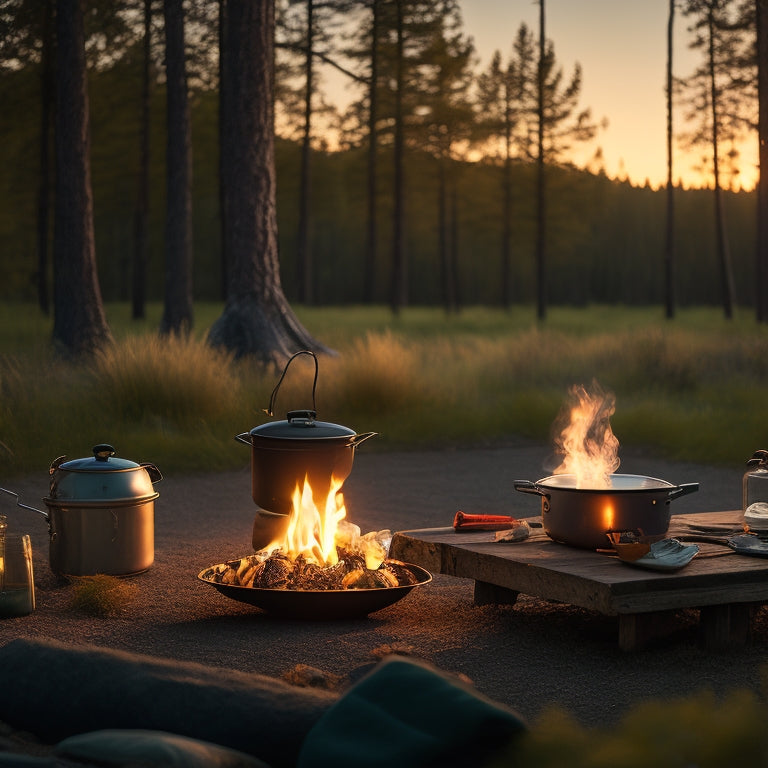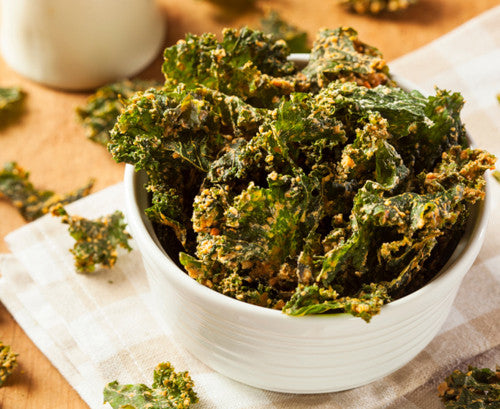
Mastering Camp Cooking: Crowd-Pleasing Tips Inside
Share
You're about to elevate your camp cooking to the next level! Start by establishing a budget and allocating around $1-2 per person for breakfast. Create a menu breakdown to visualize your strategy and calculate ingredient quantities. Assign tasks to team members, guarantee kitchen safety, and inspect equipment regularly. Craft a diverse menu that incorporates seasonal ingredients, provides dietary accommodations, and looks amazing on the plate. And don't forget to factor in unpredictable weather and gather feedback from campers. Now, get ready to access a treasure trove of crowd-pleasing camp cooking secrets that'll have everyone begging for more!
Key Takeaways
• Allocate a set budget for food and plan cost-effective meals like pancakes and scrambled eggs to stay within budget.
• Assign tasks and ensure kitchen safety protocols are followed to maintain a smooth and safe kitchen operation.
• Conduct a thorough kitchen walk-through to familiarize yourself with equipment and identify areas needing improvement before camp begins.
• Craft a diverse menu considering seasonal ingredients, dietary accommodations, and visual appeal to satisfy campers' tastes.
• Adjust menus based on weather conditions and camper feedback to ensure crowd-pleasing meals and have a backup plan for extreme weather.
Planning and Budgeting Essentials
When it comes to planning and budgeting for your camp cooking adventure, getting down to details is important, so grab a pen and paper to jot down quantities, brands, and timelines for each meal.
You'll want to determine a set budget for food and stick to it. For breakfast, allocate around $1-2 per person if you're including meat. Consider cost-saving options like pancakes and scrambled eggs. Create a menu breakdown to visualize your budgeting strategy.
Quantity planning is key, so calculate how much of each ingredient you'll need. Don't forget to manage your timeline, ensuring you have enough time to prep and cook each meal. By doing so, you'll be able to serve delicious, crowd-pleasing meals while staying within your budget.
Kitchen Organization and Support
Now that you've got your menu and budget in place, it's time to assemble a dream team to help you bring it all to life in the kitchen! You'll need a solid support system to guarantee a smooth and stress-free cooking experience.
Here are some essential considerations for kitchen organization and support:
-
Team coordination: Assign specific tasks to each team member to maintain an efficient workflow.
-
Kitchen safety: Make sure all team members are aware of kitchen safety protocols and equipment maintenance schedules.
-
Equipment maintenance: Regularly inspect and maintain kitchen equipment to prevent breakdowns and guarantee smooth operations.
- Support roles: Identify and assign roles such as meal prep, cleanup, and serving to keep your kitchen running like a well-oiled machine.
Preparing the Kitchen Space
Set up your kitchen space for success by conducting a thorough walk-through to identify potential issues and opportunities for optimization. Make certain you're familiar with all the equipment and its condition.
Check that everything is in good working order, and perform any necessary equipment maintenance to avoid last-minute hassles. Don't overlook the kitchen's safety features, such as fire extinguishers and first aid kits, to guarantee they're easily accessible and up-to-date.
By doing so, you'll create a safe and efficient kitchen environment that allows you to focus on what really matters – cooking delicious meals for your campers. Take note of any areas that need improvement and prioritize them before the camp begins.
With a well-prepared kitchen space, you'll be well on your way to a stress-free and successful camp cooking experience.
Crafting Delicious and Diverse Menus
To craft menus that will delight your campers, start by considering the key elements of a well-rounded meal, including protein, complex carbohydrates, and fresh fruits and vegetables, and aim to incorporate a variety of flavors, textures, and colors into each dish.
To take your menu creativity to the next level, try these tips:
-
Incorporate seasonal ingredients to reduce costs and add freshness to your dishes.
-
Offer dietary accommodations like gluten-free, meatless, and vegetarian options to cater to diverse tastes and needs.
-
Create a diverse menu with a mix of comfort food, international flavors, and healthy options to please even the pickiest eaters.
- Make it visually appealing by incorporating different colors, textures, and presentation styles to make mealtime a feast for the eyes.
Adapting to Weather and Feedback
As you finalize your camp cooking plans, remember to factor in the unpredictable weather and gather feedback from your campers to guarantee your menu is a hit. Weather adjustments can make all the difference in camper satisfaction. Consider the temperature and humidity when planning your meals. For example, serve warm beverages on chilly mornings and cold water on hot summer days.
| Weather Conditions | Menu Adjustments | Community Feedback |
|---|---|---|
| Hot summer days | Serve cold water and hydrating foods | Ask campers about their favorite cool treats |
| Chilly mornings | Offer warm beverages and hearty breakfasts | Gather feedback on breakfast options |
| Rainy days | Prepare comfort foods and indoor activities | Ask campers about their favorite indoor games |
| Sunny days | Plan outdoor cooking and picnics | Gather feedback on outdoor cooking options |
| Extreme weather | Have a backup plan and flexible menu | Ask campers about their favorite comfort foods |
Frequently Asked Questions
How Do I Handle Last-Minute Cancellations or Changes in Headcount?
"Ha! You thought you had it all planned out, didn't you? But don't stress, you've got this! When last-minute cancellations or changes hit, simply adjust portion sizes and handle dietary restrictions by swapping out ingredients - you're a camp cooking rockstar!"
What Are Some Creative Ways to Reuse Leftovers and Reduce Food Waste?
You can get creative with leftover recipes, transforming last night's dinner into tomorrow's lunch! Try turning leftover veggies into a hearty soup or using yesterday's roast chicken in today's wraps to reduce food waste.
Can I Use Portable Cooking Equipment for Outdoor Camp Cooking?
You're the conductor of your outdoor culinary orchestra, and portable cooking equipment is your trusty baton! Yes, you can use it for camp cooking, especially for campfire grilling and Dutch oven cooking, which will have you whipping up a storm in no time!
How Do I Ensure Campers With Severe Food Allergies Are Safely Accommodated?
You'll make sure campers with severe food allergies are safely accommodated by using allergy-friendly recipes, safe meal preparation, and having an emergency allergy plan in place, plus being prepared for ingredient substitutions on the fly!
Are There Any Specific Camp Cooking Certifications or Training Recommended?
You'll want to explore certification options like the Certified Camp Cook or ServSafe training programs to make sure you're equipped to handle food safety and special diets with confidence at your camp!
Related Posts
-

Baked Kale
Kale is one of the most healthiest and nutritious plant foods in existence and is delicious! Try these baked kale re...
